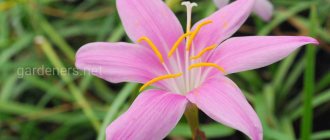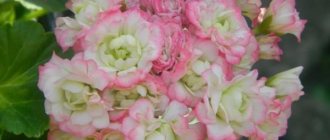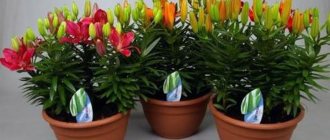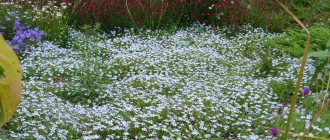If you are a passionate person and would like to try yourself as a gardener and florist all in one, grow a pomegranate on the windowsill! Such a test, ending in success, may well serve as an incentive to start your own garden. However, in most cases, growing pomegranate indoors seems to us to be a fun activity with a touch of adventurism, at the very beginning of which no one would dare to say that in three years he will be able to taste the ripe and juicy fruit from the bowl.
In this article, we will try to figure out whether it is actually possible to grow a tropical fruit tree from a seed on a windowsill, and we will learn about the rules for successfully growing a pomegranate at home in a pot. Let's talk about planting and care. Let's find out how to achieve fruiting. Let's share ideas and advice from experienced flower growers.
Features of pomegranate
Pomegranate belongs to the flowering plants and belongs to the derbennikov family. It is a flowering and fruit-bearing shrub or small tree, which in a number of European countries has the second name “grainy apple”. In the language of botanists, the fruit of this plant is called “pomegranate”. In its natural habitat, pomegranate is most widely distributed in the territory of what is now Tunisia, in ancient times known as the colonial state of Carthage. The current habitat of wild pomegranate is Southern Europe and Western Asia. The common pomegranate is cultivated everywhere in countries with tropical and subtropical climates, including Crimea and the Black Sea coast of Russia.
It seems incredible, but the history of the emergence of the Garnet genus goes back 66 million years ago - to the end of the Cretaceous period of the Mesozoic era! In the civilized world you cannot find a person who is not familiar with the refreshing tart taste of the healthiest of fruits. Our contemporaries, flower growers, who wished to touch a literally mythological plant from ancient times, “write their history of relationships” with the legendary pomegranate, growing it both in the garden and in the room.
In its natural habitat, the height of the pomegranate tree reaches 6 meters, and fruiting lasts until the age of forty. Accustomed to subtropical climates, the plant prefers to bathe in abundant sunlight and breathe hot, moisture-rich air. Such conditions are ideal for seed germination. Otherwise, even if the seed germinates, the seedlings are unlikely to be viable.
When pomegranate is kept indoors, a fairly compact bush grows, not exceeding a meter in height. At the same time, the spherical fruits reach 6 cm in diameter. Small shiny leaves up to 3 cm long are light green in color and have the property, like all deciduous plants, to fall off before the onset of winter dormancy. Thin branches are strewn with thorns. The tree attracts attention with its spreading but neat crown on a slender trunk.
In spring, two types of flowers appear: fertile and infertile. The flowers of the first type are funnel-shaped and deep orange in color. At the end of flowering, they form spherical fruits with a leathery pericarp and a calyx with triangular lobes. The fruits are covered with a brown-red peel and contain up to a thousand units of seeds, “packaged” in two-tier nests. Flowers of the second type are similar to miniature gramophones. Their life cycle does not exceed 4 days. Tropical pomegranate is distinguished by continuous flowering from May to August: the plant literally throws out new buds one by one.
The wait for the first harvest is not so long, only 3 years. The fruits reach maturity in October.
It is easier to propagate pomegranate by cuttings. However, familiarity with agrotechnical nuances will allow you to grow a fruit tree even from a seed. The main condition for a successful outcome of the experiment will be the creation of optimal conditions and competent care.
Popular varieties of indoor pomegranate
- Carthage - up to 80 cm high, the fruits are quite large, up to 5 - 7 cm in diameter, with a sweet and sour taste.
- Baby - reaches 50 cm in height. The flowers are large, up to 6-7 cm long. Pomegranates are up to 4 cm in diameter and taste like regular large pomegranates.
Important: with proper care, dwarf pomegranate can bloom almost all year round.
Planting/growing
In room conditions, the pomegranate tree is cultivated in several stages:
- growing season;
- time of winter rest;
- awakening;
- resumption of flowering and forcing.
The most problematic aspect of keeping a subtropical resident in a city apartment with central heating in winter and low air humidity will be compliance with the natural development cycle. If you pay due attention to the plant at each stage, then its vital needs can be satisfied in central Russia.
Before purchasing a pomegranate seedling in a store or nursery, choose your purchase responsibly. Carefully inspect both the above-ground part and the part hidden in the container. The leaves should be glossy and bright green in color. Carefully remove the bush along with the earthen lump from the container and evaluate the root system for health. It should be well developed and have white healthy roots. Experienced flower growers recommend not throwing away the label with the name and schematic description of the care requirements. This can help you navigate the rules for maintaining this particular plant and avoid mistakes.
One of a number of arguments in favor of choosing an exotic plant is the mild requirements for the composition of the soil for indoor pomegranate. Any ready-made soil mixture offered by flower shops will do. But among the entire range, the most favorable for pomegranate will be a loose substrate with a neutral PH7 reaction, which has high air and moisture permeability properties. Pomegranate grows well in special soil for begonias or roses.
If it is not possible to purchase a ready-made substrate, prepare it yourself according to the following recipe:
- humus (compost) - 1 part;
- garden soil - 2 parts;
- sawdust - ½ part;
- river sand - ½ part;
- high-moor peat - ½ part.
For a flower pot, it is preferable to choose a fairly wide and deep container with drainage holes and a tray. To prevent stagnation of moisture near the root system, be sure to form a drainage layer of expanded clay or other material with suitable properties.
Transfer
There is no need to rush to replant a pomegranate, like any other indoor plant purchased in a store. The beginner must recover from the stress caused by the change in conditions and acclimatize to the new place in a few days.
When transplanting pomegranates at home, experienced gardeners recommend choosing a slightly cramped container. They justify this choice by the peculiarity of pomegranate to form a much smaller number of sterile bell flowers in a tighter pot.
The bush is first transplanted at one year of age. When the plant reaches 4 years of age, replanting is stopped, annually replacing the top devastated layer of soil with fresh and nutritious one. Only as a last resort, when it has become clearly noticeable that the root system is too crowded in the pot, do they risk disturbing the tree by replanting. For this purpose, a gentle version of “relocation” is used - transshipment along with an earthen lump. They adhere to the following rule: the diameter of the new pot should not exceed the size of the old one by more than 3 centimeters.
What does it look like?
The dwarf pomegranate can be called an exact smaller copy of its parent:
- Height – no more than one meter. Growth can be regulated through regular haircuts, further forming the desired crown shape.
- The branches are thin, erect, covered with grayish-brown bark. Unlike their parent, they do not have thorns.
- The leaves are two to three centimeters long. The shape is oblong. They are located in clusters on small shoots. Taking into account the conditions and the chosen variety, the dwarf pomegranate can be evergreen or fall off when autumn comes.
- The fruits are from three to five centimeters in diameter. The shape is spherical with a characteristic crown-shaped rim. Color – rich red with minor deviations. As an exception, there are varieties with a black and purple color. They are considered very decorative.
- The flowers are bell-shaped or pitcher-shaped. The first ones form without an ovary and fall off quickly - more than 90% of them. The second ones are with the ovary, it is from them that the fruits appear. Color – dark red with variations. Diameter – 2-3 centimeters. Flowering continues for several months, due to which they are considered very decorative.
- The seeds are covered with juicy pulp, which is eaten. Color - from pink to dark red.
The taste qualities of the dwarf pomegranate are not inferior to the parent ones - sweet with possible deviations towards a sour taste.
Top dressing
To activate the growth of a plant during the seedling period, it is watered with a water-ash suspension prepared at the rate of 1 tsp. ash per 1 liter of water.
Fertilizing the pomegranate tree in spring and summer is carried out twice a month, using a special universal fertilizer for indoor plants in liquid form. Keep in mind that if you expect to grow fruit, you should prefer organic fertilizers, such as bird droppings, to mineral fertilizers. When fertilizing pomegranate, it is important to know when to stop: too much nitrogen fertilizer can prevent the formation of fruiting flowers and lead to a lack of harvest.
Trimming
Pruning during the off-season is a great way to form a pomegranate into a nice standard tree. You can choose any of the options: a miniature tree with a low trunk and 4-5 skeletal branches, or a compact bush with 3-4 skeletal branches. Later, as it grows, 4-5 branches of the second order are laid on the skeletal branches, and then the third.
Sanitary pruning of pomegranate allows you to get rid of thin, weak, lifeless or damaged shoots, as well as fatty and root growth. Old branches that no longer bear fruit are also removed. Prevention of crown thickening will be pruning on the buds directed towards the inside.
When pruning, you should remember that the fruits will appear on the shoots of the current year.
Description
The shoots of the bush are covered with gray-brown wood. Leaf arrangement is opposite, whorled. The plates are wavy, with smooth edges. The outer side of the sheet is glossy, the inner side is matte. It blooms with funnel-shaped scarlet buds on shortened peduncles. Fruits are formed only in place of flowers that resemble jugs. Pomegranate blooms all year round.
The common pomegranate is suitable for growing at home. In the wild it grows up to 5-10 m. The diameter of the fruit reaches 8-18 cm. Breeders have developed a huge number of different forms and varieties from this species. Dwarf pomegranates are usually planted at home. It does not grow higher than one meter, has small leaves, and produces fruits no larger than 3 cm.
Care
Caring for indoor pomegranate at home is not as difficult as it might seem. Knowing the secrets of success for experienced flower growers will help you understand the basic parameters of the content:
- temperature - during growth, flowering and fruiting in the range from +18 to +25°C, during winter dormancy from +12 to +15°C, but not lower than +6°C;
- lighting - the brightest place with shading from direct midday rays in summer; in winter, daylight hours are artificially extended to 10 hours;
- watering - abundant and frequent in summer, significantly limited in winter;
- humidity - in hot weather it needs to moisten the leaves or air around the bush;
- propagation by seeds, grafting or cuttings.
Flowering and fruit set
Pomegranates bloom for quite a long time - from April to the end of August, the flowers are distinguished by their beauty and unusual shape. There are 2 types of flowers:
- Pitcher-shaped plants have long pistils, from which fruits are subsequently formed.
- Campanulates have short pistils and do not produce fruits.
There are much more flowers of the latter type - 90% of them compared to 10% are fruitful; pomegranate flowers are self-pollinating. Their sizes vary, their diameter is 2 cm, and their length often reaches 4 cm.
If the flower is sterile, it quickly fades; the life of the fruiting plant lasts from 6 to 10 days.
The small fruits of the dwarf pomegranate begin to set in the fall after the flowering period ends. Edible fruits come in a variety of colors, ranging from orange to deep red, they have thin skins, and they are sour.
Temperature
In the warm season, when pomegranate grows, blooms and bears fruit, the optimal temperature is moderate in the range from +18 to +25°C. Therefore, in the summer there should be no difficulties in indoor maintenance. The plant, which arrived from the subtropics, can tolerate heat, but sharp fluctuations in air temperature can cause the fruit ovary and leaves to fall off.
During winter dormancy, it is important to ensure coolness from +12 to +15°C, but not lower than +6°C.
Such conditions are necessary for the plant to fully rest and prepare for the upcoming flowering and ripening of fruits.
Harvesting and storing pomegranate harvest
The Carthage pomegranate, grown from cuttings, begins to bear fruit at 3-4 years, and from seeds at 6-8 years. The fruits are harvested when ripe, when the skin acquires the color characteristic of the variety. Store in the refrigerator in the vegetable compartment for 2-3 months.
Carthage pomegranate requires careful care, starting from the day of planting. Its development and fruiting depend on temperature and humidity conditions, lighting, watering and fertilization. If grown correctly, the tree will not only bloom luxuriantly every season, but you can also harvest delicious homemade pomegranates from it.
Lighting
The pomegranate tree's light requirements vary depending on the time of year. In spring and summer, it would be good to place a container with a tropical alien on a window with a southern, western or eastern orientation. Even prolonged cloudy weather outside should not deprive pomegranates of a generous portion of lighting. In this case, the lack of light is compensated by supplementary illumination with an LED phytolamp. The bush loves to bask in the rays of the sun, but it will not like the activity of midday ultraviolet radiation, and at this time the plant should be shaded. Among the pomegranate's preferences is fresh air, so it needs to be offered air baths on the balcony, veranda or in the garden. For lack of anything better, normal ventilation of the room will do, as long as it does not provoke destructive cold drafts.
In autumn and winter, the brightest places in the apartment are determined for pomegranate. The pot with the bush is moved as close as possible to the window glass, and a heat-insulating material, for example, a polystyrene foam plate, is placed under the tray so as not to freeze the flower. At this time, the pomegranate will rejoice at any ray of sunlight, because the activity of the luminary is small and will not cause harm to the plant. To extend the short natural daylight hours to 10 hours, LED lighting is used. If you neglect the lighting rules in winter, the pomegranate will stretch out unsightly and lose its former charm and decorativeness.
Caring for pomegranate at home
Despite the fact that the southern guest is not a very capricious plant, growing a homemade dwarf pomegranate will require some effort from the gardener. It is important to create conditions close to natural, only in this case the tree will actively bloom and bear fruit.
One of the features of growing pomegranate is the dormant period required by the plant. How to help a tree survive the winter?
Rest period
At the end of autumn, when the leaves begin to fall on the trees outside the window, the indoor pomegranate, just like its outdoor counterparts, sheds its leaves. In adult specimens, this process usually begins after the fruits ripen.
The first fallen leaves are a signal to the grower that the plant should be prepared for wintering. To do this, move the pomegranate to a cool (13-15°C) room and reduce watering. Such a room can be a glazed loggia of an apartment or a closed veranda of a house. If there is no corner with the required temperature in the house, you can try to create conditions for wintering in an ordinary room. To do this, the pomegranate must be moved as close as possible to the cold window glass and covered with polyethylene.
[!] Young, one- and two-year-old pomegranates do not need a rest period and can winter in an ordinary city apartment.
Temperature and lighting
Apart from the winter period, when the pomegranate needs to provide a lower air temperature, the most suitable range for the plant is 20-25°C. Extremely low or too high temperatures in the summer will negatively affect the pomegranate: leaves, flowers and ovaries may suddenly fall off.
Pomegranate is very light-loving, because its homeland is sunny southern countries. One of the most common problems with growing a miniature tree at home is the lack of sunlight, so the best location for a pomegranate will be windows facing southwest or southeast. However, direct scorching rays can burn tender leaves and, during the period of the most active sun, the plant needs to be shaded a little.
[!] Due to a lack of sunlight, pomegranate shoots can stretch and take on an unsightly long shape. In addition, such shoots usually have too few leaves.
First of all, a large amount of light is necessary for the ripening of pomegranate fruits. If there is not enough insolation during the summer, the pomegranates will fall off in the fall without having time to ripen.
In order for the plant to fully receive the necessary sunlight, you can take the pomegranate outdoors in the summer - experienced gardeners insist on the benefits of this procedure.
Watering and air humidity
Watering pomegranates, like the temperature, depends on the time of year. In winter, watering is significantly reduced (once a month), and with the onset of spring and the awakening of the plants, they begin to gradually increase. In the warm season, there should be enough moisture, but not excess.
In order to determine the need for the next watering, you need to check the depth of drying of the soil: the soil should dry out by one third or half of the pot.
Both flooding and excessive drying of the soil have a bad effect on pomegranate: flooding can provoke waterlogging of the ground and, as a consequence, the occurrence of root rot, and drought can completely destroy the plant. In addition, excessive watering in the fall provokes cracking of ripening fruits.
Pomegranates respond well to microclimates with sufficient moisture. Therefore, on particularly hot summer days, you can spray the plant with water at room temperature from a spray bottle. If the room temperature is low, spraying is not necessary.
Trimming
Pruning is a mandatory procedure for pomegranate. The formed plant develops better, produces more flowers and ovaries, and looks much more decorative: in the form of a fluffy bush with several main branches or a tree with one distinct trunk.
The best time to trim pomegranate is the end of February (before awakening) or September (before wintering). However, if necessary, you can trim individual shoots throughout the summer.
For pruning, young branches that are crooked or growing too densely, old elongated shoots and root shoots are selected.
[!] Old, two- to three-year-old shoots are not completely cut off, but only shortened by a third of the length - it is on them that flowers and ovaries are subsequently formed.
[!] Pruning is done above a bud oriented outward; if you leave the outermost inner bud, in the future new shoots will turn towards the pomegranate trunk, which will have a bad effect on the appearance of the plant.
Every five years, the pomegranate must be rejuvenated, gradually replacing the main skeleton-forming branches with young ones.
Soil, replanting and fertilizing
To grow pomegranate, you need fertile, but at the same time fairly light (water and breathable) soil with neutral acidity. Ordinary universal soil with added sand works well. To independently prepare the substrate, use turf and leaf soil, peat and sand in a ratio of 2:1:1:1.
To ensure that the water does not stagnate in the pot and that the roots receive the necessary oxygen, it is important to organize a sufficiently high, at least one quarter of the container, drainage layer. Expanded clay, small pebbles or clay shards can serve as drainage.
The frequency of replanting pomegranate depends on the age of the plant. Young, one- to two-year-old specimens are replanted every year, adults - once every two to three years, especially large trees - no more than once every five years. In addition, you can sometimes update the substrate without replanting. accordingly, without injuring the plant. To do this, you need to replace two to three centimeters of the top layer of soil in the pot with fresh, nutritious soil.
[!] One of the important rules when replanting pomegranates is to use fairly compact containers. Only in cramped conditions will the pomegranate bloom intensively and produce ovaries. A bowl that is too spacious will provoke rapid growth of green mass to the detriment of flowering.
To transplant pomegranates, you should choose pots that are not too deep, but rather wide: the root system of the southern guest is located mainly near the surface of the earth.
Pomegranate needs feeding, but not all year round. In autumn and winter, during leaf fall and wintering, it is better to exclude fertilizers, but in spring and summer, on the contrary, they can and should be used. In order for the southern tree to develop well after the winter awakening, intensively grow new shoots and bloom thickly, nitrogen-phosphorus fertilizers are used.
Reproduction
Pomegranate can be propagated in several ways:
- seeds,
- cuttings,
- layering,
- vaccinations.
The first two methods are the simplest and most common among amateur gardeners. Let's take a closer look at them.
Propagation of pomegranate by seeds
It is better to purchase pomegranate seeds for planting in specialized flower shops; only in this case can you get a tree of the desired variety. Seeds taken from other plants, as a rule, lose varietal quality. The best time to plant seeds is late March or early April.
One or more pomegranate seeds are soaked in water for a day, after which they are sown in a mixture of peat and sand to a depth of about five millimeters. The soil must be watered quite intensively, and the pot with the planted seeds must be placed in a warm, dark place. After the first shoots appear, the bowl needs to be moved to the light.
When the second pair of true leaves appears on the sprouts, the roots of young pomegranates can be pinched 2-3 mm - this is done for better development of the root system. However, only experienced gardeners can carry out this procedure - cutting the root too much with inexperienced hands will destroy the plant.
When the pomegranates are strong enough, they can be planted in separate containers in a regular substrate.
Propagation of pomegranate by cuttings
After the pomegranate forms in spring, cut shoots can be used for propagation. Branches about ten centimeters long and five buds are best suited for this. The shoots are buried in a peat-sand mixture, watered and covered with the top of a cut plastic bottle, while unscrewing the lid and thus making a hole for ventilation. After rooting and the appearance of several pairs of leaves, the cuttings are transplanted into separate pots.
[!] Be patient: rooting cuttings is a rather lengthy process. In addition, not all cuttings survive, so it is better to plant several at once and then choose the healthiest one.
Pests and diseases
Pomegranate is loved by many insect pests: scale insects, aphids, spider mites, but the greatest danger to the southern tree is the whitefly. You can fight this white scourge in different ways: if the population is still small, you can use folk remedies: garlic or onion infusion. If insects are widespread, the best solution would be to use modern insecticides: Akktelik, Aktara, Tanrek and others.
Pomegranate diseases usually appear due to improper care of the plant. For example, too much watering leads to the appearance of root rot, and scorching direct sun provokes the development of burns on the leaves. If you carefully care for the pomegranate, no diseases will harm the southern tree.
Humidity
The pomegranate tree is not particularly sensitive to air humidity. It will tolerate a humidity level of 40-50% well. However, florists recommend that on hot days, to ensure the pet’s comfort, spray the leaves with soft water from a spray bottle from time to time, or, if you have the patience and time, wipe with a damp sponge. The most effective way to achieve the desired level of air humidity in an apartment is to use an electric humidifier. The easiest thing to do would be to place a tray with wet pebbles or expanded clay next to the bush.
Watering
From spring to autumn, pomegranate is watered abundantly. Irrigation is repeated as soon as the top layer of the earthen clod dries. When the plant is actively blooming, watering procedures are reduced. In a state of winter dormancy, the bush does not need moisture, so watering is significantly limited to scanty.
The surest way is to apply moisture directly under the root through a watering can with a long narrow groove. This prevents drops of water from getting on the leaves. A nuance that should not be neglected: irrigation water should be approximately two degrees warmer than room temperature and kept away from chlorine for at least a day.
Reproduction
In floriculture, it is possible to obtain a young pomegranate tree in several ways: propagated by seeds, cuttings or grafting. It is important to remember an important nuance here. A plant grown from a seed may lose the varietal characteristics of the mother specimen. At the same time, cuttings make it possible to fully preserve the parental characteristics of the variety.
Since many flower growers are interested in the question of how to properly grow pomegranate from seeds at home, let’s take a closer look at it.
To implement this budget method of propagation, you will have to buy a fully ripened pomegranate fruit without any external damage. Then the planting material needs to be prepared for germination. The fresher the seeds, the faster they will sprout.
The seeds are removed from the fruit and freed from the pulp by squeezing out the juice, but care is taken not to deform them. Rinse under running cold water and blot with paper towels to prevent the onset of rotting processes. Dry for some time.
To sow seeds, choose a clay pot, pour a layer of expanded clay drainage on the bottom, and on top - a purchased coconut substrate or prepared soil mixture:
- river sand;
- peat;
- garden soil.
The dried seeds are laid out at a distance of 5 cm from each other in moist soil, buried one centimeter and dug in. Then the crops are irrigated using a spray bottle. To create a greenhouse effect, cover the pot with glass or plastic wrap. The improvised greenhouse is placed in a warm place illuminated by sunlight. Monitor the moisture content of the crops. If the soil is dry, moisten it a little.
Under favorable conditions, high-quality planting material will produce the first shoots in about 2 weeks. You will need to gradually remove the glass from the surface of the pot so that the sprouts adapt to the environment. Active growth of seedlings will serve as a signal to finally open the greenhouse. Next, an audit is carried out to cull weak and deformed specimens in order to leave the most viable ones for further cultivation.
The appearance of the first fruits from a plant obtained from the seeds of a purchased pomegranate can only be expected after 7 years. If you use indoor pomegranate seeds to sow seeds, you will be able to try the miniature fruit for the first time within 2 years from the date of planting.
Gardeners consider cuttings to be the most reliable planting material. If the plant is not grown for fun, then it becomes important that cutting pomegranates at home allows you to preserve the genetic information of the parent plant, including the taste of the fruit and immune characteristics.
At the beginning of spring, cuttings up to 15 cm long are selected for planting. The middle part of a two-year-old branch with three to four buds is cut out. Then they proceed in the following sequence:
- place the cuttings for 2 days in a root formation stimulator diluted with water, for example, “Kornevin”;
- place the cuttings in a container with nutrient soil;
- after 20-30 days, you can notice the appearance of primary roots on the cuttings. Flower buds will begin to develop on new branches;
- you can transplant the rooted cuttings into a larger container with light sandy soil;
- When the tree gets stronger and reaches a height of 50 cm, it can be transplanted into a permanent, spacious container and decide whether to leave it to grow indoors or plant it in open ground.
When the root system has developed so much that it fills the entire space of the container, it is better not to replant the plant; it will be enough to change the top layer of soil twice a year to a more fertile one. It is recommended to start fertilizing with fertilizers during active growth and at the fruiting stage.
To obtain a real varietal pomegranate, take the rootstock of a bush, which is grown from a seed, and graft a varietal cutting from a fruiting bush. Grafting is carried out using various methods, depending on the size of the rootstock and cuttings. Of the more than 150 existing grafting methods, flower growers prefer only two: simple copulation and copulation with a tongue, in a split, behind the bark, in a butt, in a side cut. An indicator of successful grafting and an assessment of your efforts will be the flowering of pomegranate in 3-4 years.
Advantages and disadvantages
The advantages include the following::
- The variety is recognized as unpretentious in care, so even a novice gardener can handle it.
- Dwarf pomegranate is very decorative. This applies not only to flowers and fruits, but also to the crown of the plant and its other parts. If desired, you can form a full-fledged bonsai from a miniature tree.
- Fruits with good taste.
- The small size allows you to place the plant on a standard windowsill. The height of the pomegranate can be adjusted independently by periodically trimming the crown.
The downside of the dwarf pomegranate for those who grew the tree only for the sake of eating the fruit is its insignificant yield. It is also worth noting the need to grow the plant indoors due to the low frost resistance of the fruit crop.
Pests and diseases
The most insidious disease found in pomegranate trees is cancer of the branches (roots). It is caused by mechanical trauma to the cortex. If the disease is not very advanced, the plant is either cut back to healthy tissue, smearing the cuts with garden varnish, or cut “to the stump” in the hope that it will recover.
Signs of gray mold may suddenly appear. Rescue in this case is possible through treatment with a fungicidal preparation or Bordeaux mixture solution.
The pomegranate tree may be attacked by aphids or spider mites. Possible attacks by mealybugs, scale insects, codling moths, and whiteflies. To get rid of one pest or several at once, the plant is sprayed with a systemic insecticide.
According to a long-standing legend, a pomegranate tree growing in a house serves as a talisman for its inhabitants. It is a symbol of beautiful love and strong family ties. Having grown a magic tree with your own hands, you gain its powerful protection in subtle matters, and your household will be happy to taste the treasured “grainy apple”.
| Growing | The temperature during intensive growth is from 18 to 25 degrees, during the dormant period - from 12 to 15 degrees. Prefers bright diffused light with shading from the midday sun. Watering during the period of active growth is frequent and plentiful; during the flowering period, watering is reduced, and in winter - sparing. |
| Humidity | In the hot season, in the evenings it needs to moisten the foliage with warm water from a sprayer. |
| Feeding and pruning | In the spring-summer period, fertilize 2 times a month with a mineral complex fertilizer with a low nitrogen content. Needs formative pruning in February. |
| Flowering period | Once a year, flowering lasts from May to August. |
| Landing, transplant | Young trees need annual replanting. Bushes older than three years are replanted only if necessary, after the roots no longer fit into the container. |
| Reproduction | By seeds, cuttings or grafting. |
| Pests | Mealybugs, spider mites, scale insects, aphids, codling moths and whiteflies. |
| Diseases | Branch cancer, root rot. |











